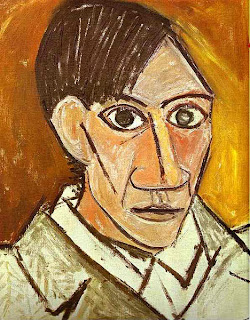
WARSAW, Poland – Researchers said Thursday they have identified the remains of Nicolaus Copernicus by comparing DNA from a skeleton and hair retrieved from one of the 16th-century astronomer's books. The findings could put an end to centuries of speculation about the exact resting spot of Copernicus, a priest and astronomer whose theories identified the Sun, not the Earth, as the center of the universe.
Polish archaeologist Jerzy Gassowski told a news conference that forensic facial reconstruction of the skull, missing the lower jaw, his team found in 2005 buried in a Roman Catholic Cathedral in Frombork, Poland, bears striking resemblance to existing portraits of Copernicus.
The reconstruction shows a broken nose and other features that resemble a self-portrait of Copern icus , and the skull bears a cut mark above the left eye that corresponds with a scar shown in the painting.
Moreover, the skull belonged to a man aged around 70 — Copernicus's age when he died in 1543.
"In our opinion, our work led us to the discovery of Copernicus's remains but a grain of doubt remained," Gassowski said.
So, in the next stage, Swedish genetics expert Marie Allen analyzed DNA from a vertebrae, a tooth and femur bone and matched and compared it to that taken from two hairs retrieved from a book that the 16th-century Polish astronomer owned, which is kept at a library of Sweden's Uppsala University where Allen works.
"We collected four hairs and two of them are from the same individual as the bones," Allen said.
Gassowski is head of the Archaeology and Anthropology Institute in Pultusk, in central Poland, and Allen works at the Rudbeck Laboratory of the Genetics and Pathology Department of Uppsala University.
Copernicus was known to have been buried in the 14th-century Frombork Cathedral where he served as a canon, but his grave was not marked. The bones found by Gassowski were located under floor tiles near one of the side altars.
Gassowski's team started his search in 2004, on request from regional Catholic bishop, Jacek Jezierski.
"In the two years of work, under extremely difficult conditions — amid thousands of visitors, with earth shifting under the heavy pounding of the organ music — we managed to locate the grave, which was badly damaged," Gassowski said.
Copernicus is believed to have come up with his main idea of the Sun at the center of the universe between 1508 and 1514, and during those years wrote a manuscript commonly known as Commentariolus (Little Commentary).
His final thesis was only published, however, in the year of his death. His ideas challenged the Bible, the church and past theories, and they had important consequences for future thinkers, including Galileo, Descartes and Newton.

No comments:
Post a Comment